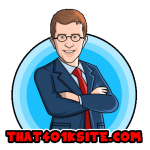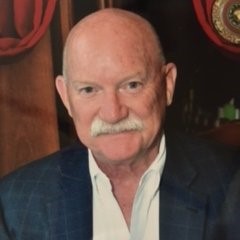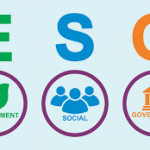Without social media, I’d be an unhappy associate attorney at some law firm. Retirement plan providers need to understand the power of social media in building their practice. Bruce Johnston is one of the best social media experts out there and any plan provider seeking a better presence on social media websites, should consider contacting Bruce.
Q: You were in the financial business before the social media business?
A: Yes, up until 2008 I had been involved in the financial services business on the distribution side for 35 years. I began as a regional wholesaler rising to National Sales Manager and eventually President & CEO for three different distribution firms. I guess you could say I haven’t strayed far from the distribution business as since 2008 I continue to be involved in the business but purely as a Social Media Consultant. My role puts me at the desktop or on the phone with advisors most days.
Q: How did you start in the social media business?
A: In 2008 I began to question the distribution methodology for financial products to advisors. At the time, distributors practiced two strategies which I didn’t believe were particularly effective: “one size fits all” and, “those that send the most content win”. There was absolutely no consideration to the needs of the advisor. Everyone received the product du jour regardless of whether they used it, recommended it or were considering it. The result, distribution firms were alienating advisors faster than they could create brand advocates. Additionally, I questioned the client acquisition and retention methodology being employed by advisors.
These two questions coupled with society’s move to Social Media helped me determine that social media tools such as LinkedIn, Twitter, Facebook and some form of Marketing Automation would provide significant impact on the way advisors managed their business and met their clients’ financial needs going forward. I believed I was right, but still in early 2013, a Family Wealth Report stated: “92% of wealth managers still thought face-to-face communications were the most important method of communication, while 82% of clients thought electronic communications were”. Some would have folded their tent and gone home but I viewed the impact social media would have on the industry as a tremendous opportunity.
Q: How were you able to parlay your social media interest with your financial business background?
A: In 2008 I viewed the major impediments to social media adoption in financial services as compliance and a respected messenger. Both played to my advantage as I had the industry background, had held the appropriate licenses at one time that heightened my sensitivity to compliance and certainly had age playing in my favor. I’m not a millennial but rather a peer in many ways to the current advisor population. I love the competitiveness of advisors and have many times heard: “If someone your age can do this so can I.”
Doesn’t mean it was easy. My first presentation, in January 2009, was at the New York City Yacht Club as a guest of George Wilbanks, who at the time was a principal at Russell Reynolds. He’d invited the Top 100 Asset Management firms to discuss social media. Twenty-five firms sent representatives and not one hand was raised when the audience was asked: “Is your firm using social media for client acquisition?”
Fast forward to January 2010 and our mutual friend James Holland, MillenniuM Investment & Retirement Advisors LLC invited me to speak at their annual conference in Charlotte, NC. In the latter part of 2011 I partnered with Macquarie Group’s Delaware Investments for the purposes of working with the its Regional Directors and their advisor partners on how to leverage social media for client acquisition and retention.
My relationship with the firm is going on six years now and so far we have reached approximately 20,000 advisors with the program.
Q: What do retirement plan providers especially financial advisors not understand about social media?
A: Most retirement plan providers and advisors don’t realize by not having a digital footprint in the form of a website at a minimum, and a LinkedIn Profile, Twitter account and Facebook Page preferably, they don’t exist to many people. That number will certainly grow as more and more people use the Internet to identify needed services including plan providers and advisors.
The most current number I can find on number of LinkedIn Company pages is 4 million as of November 2014. However, if you search for 401k Retirement Plan Sponsor or Retirement Plan Sponsor on LinkedIn the search reveals 19 and 120 firms respectively. I’m certain there are more 401k retirement plan sponsor and retirement plan sponsor firms than that in the United States. But as mentioned, if you’re not there you’re not going to be found.
They generally don’t understand that social media is an extension of their brand. Most view it as necessary evil and don’t realize the reach of the platforms. On LinkedIn alone there are 467 million users, 133 million of those in the Unites States, representing a tremendous amount of purchasing power and investable assets. Of that number, 45% have an annual household income of $75,000 or more. They’re not all Millennials, as 44% of those are aged 50 to 65+ and additional 34% are aged 30 to 49. 35% of these people are employed and one would suspect a fair number have access to a retirement plan.
They don’t fully grasp social media provides them a platform to become a thought leader in the retirement space. By being able to publish original material, or share the best of the best on retirement planning, plan sponsors and advisors can position themselves to be considered thought leaders in specific or various aspects of retirement plans. They also underestimate the reach social media provides for their posts. LinkedIn claims that by posting 20 times per month you will reach 60% of your LinkedIn connections.
Do the math. If I have 500 connections that’s 300 people that will see my post. If they in turn Like, Comment or Share my material the size of the audience viewing my post is compounded dramatically.
Q: I saw a service that was criticizing social media while championing word of mouth instead. What is wrong with that statement?
A: At first blush, nothing. Of course, in today’s digital world it’s not as simple as choosing one or the other. There have been books and books written on this subject. If you Google “word of mouth marketing” in less than 0.66 seconds, there are about 25,400,00 results.
It’s readily recognized and well documented that one of the most powerful ways to influence business results is Word of Mouth Marketing (WOMM). Nielsen reports that 92% of consumers believe recommendations from friends and family over all other forms of advertising. WOMM naturally reaches an interested audience. People share information with others they think will find the information useful.
My position is social media is the digital form of WOMM. Small businesses rate social media (48%) and word of mouth (45%) in the top 10 tools they use for marketing. What plan sponsors and advisors need to focus on is “Engagement”.
The issue with social media for plan sponsors and advisors is they spend all their time adding new connections or followers and no time, let alone enough time, “engaging” those connections and followers. In my presentation, I often ask: “Would you rather have 50 connections that provide you 5 referrals a year or 1,000 connections that provide you zero referrals?” For those that get the answer wrong I ask them to leave the session.
What does it mean to Engage one’s connections? Share videos, share content that your connections may find pertinent. Share their content and tag them in your posts. Listen to what their saying on social media and respond accordingly. Ask them what their interests are and provide them materials that supports their position or thinking.
Bottom line, social media marketing is a tool in the WOMM toolbox. WOMM is when a business does something that thrills their client and that client tells five to ten of their friends. This is called an echo affect. Social Media marketing has a compounding affect. Yell five to ten people about your product or service and they tell five to ten of their friends and they tell another five to ten of their friends.
Q: How can retirement plan providers use social media to stand out?
A: One firm that I’ve worked with and is using social media to stand out is NFP, specifically the NFP Retirement Division, one of the largest retirement planning firms in the nation. They have 1,243 followers of their LinkedIn Company page, which is high for the retirement industry and a firm their size, in addition to 91 employees on LinkedIn.
What they’ve done well is create consistency of their visual branding with an appropriate cover image, logo and style that synch’s up with their other divisions.
The boilerplate information, which most firms ignore, describes concisely what they do, who they serve and what they do better than others and why their audience should care. Their products and services are clean with appropriate calls to action. The updates and thought leadership pieces on their site are current and relevant to the industry and market.
They have empowered their employees to share company-generated and shared content with their connections and encourage their employees to join industry relevant groups and monitor discussions to promote NFP and to gain valuable industry intelligence.
I’m currently discussing with them, through Delaware Investments sponsorship, to deliver my message to the retirement firms who subscribe to their retirement planning tools and services.
Q: What are the biggest mistakes that retirement plan providers do with social media?
A: The biggest mistake I see is most retirement plan providers and advisors don’t have a serious LinkedIn, Facebook or Twitter presence. Most have profiles on each of these platforms but most are incomplete or outdated, provide vague or incomplete information, have outdated or no content, are not keyword optimized and have few if any connections or followers. The most egregious mistake is a significant number of social media profiles don’t contain photos and are littered with typos.
These platforms are designed for users to describe what distinguishes or makes them distinct from their competition. Most users don’t grasp that.
Q: Many professionals treat their LinkedIn posts like they do with Facebook. Is that a mistake?
A: Yes. Let’s look at the two platforms and their purpose.
Facebook is a social platform and serves as a personal network for users to connect with friends and loved ones and share and engage in conversations.
LinkedIn is different from the rest of the social media platforms in that it is designed for businesses and business professionals to network and prospect. Think white-collar college graduates. People on LinkedIn expect others to reach out, try to connect and leverage shared connections and their connections. It is a platform for establishing one as a thought leadership.
While a post suggesting by answering the question correctly will put you in the genius category might be appropriate on Facebook it certainly wouldn’t be appropriate for LinkedIn.
Also, while multiple posts per day on Facebook are acceptable, 1-2 posts per day on LinkedIn is the suggestion to establish oneself as a thought leader.
Q: How do you help plan providers with your work at Delaware Investments?
A: There are a variety of ways we’re helping plan providers and advisors depending on their social media needs, size of firm and social media acumen.
We usually start the process by holding a General Session with the firm’s principals and team. The session is designed to provide an overview of social media and a brief description of the three primary platforms, LinkedIn, Facebook and Twitter. As LinkedIn is the primary platform most firms and advisors are utilizing I take a deep dive in how to build a LinkedIn Profile that will help the firm and advisors be found on LinkedIn.
After this session, I conduct one-on-one sessions with interested individuals and get very specific about how they can improve their LinkedIn, Facebook and Twitter Profiles. If the individuals can’t meet now we schedule, Go-To-Meeting sessions.
You might think of these sessions as 101 and 201 level classes. For some they are 401 level classes! I conduct follow-up sessions as needed and new this year is a module outlining a LinkedIn client identification and acquisition strategy.
We also offer Center of Influence (COI) training sessions. These sessions have been presented to CPAs, Attorney’s, C-Suite Executives, Gatekeepers and Networking organizations.
Q: How can retirement plan providers contact you to learn more about you and your social media practice?
A: The primary source of contact is Delaware Investments and specifically:
Kurt Phares
VP Western Division
DCIO / Bank Trust
Delaware Investments
A member of Macquarie Group
949-466-7066
Kurt.Phares@Delinvest.com
I can be reached at:
D. Bruce Johnston
Social Media Consultant
Two Dogs Social
610-772-3553
www.twodogsocial.com
bruce@twodogssocial.com







